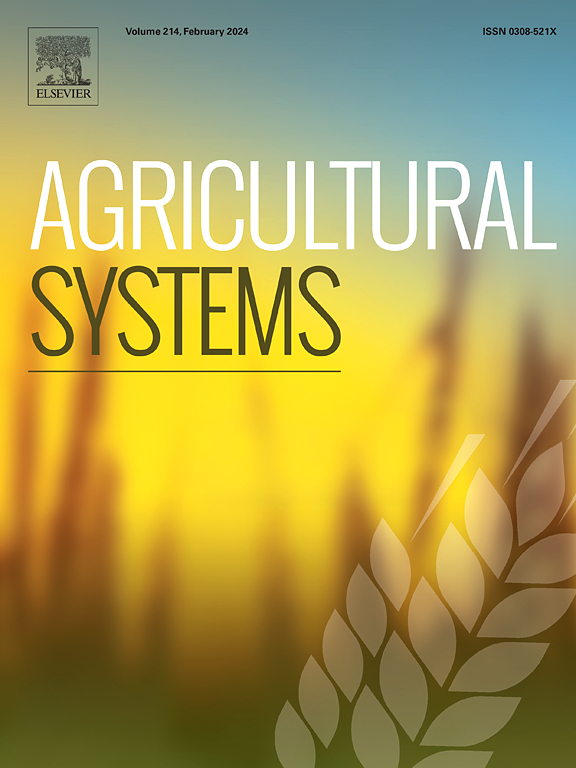Decoding local terroir: Data mining to predict sensory profiles of coffee beverage
IF 6.1
1区 农林科学
Q1 AGRICULTURE, MULTIDISCIPLINARY
引用次数: 0
Abstract
CONTEXT
Secondary metabolism aids plant adaptation to environmental stress, suggesting that terroir may reflect stress-induced coffee crop responses. Additionally, soil and environmental conditions affect plant growth, which in turn influences bean composition and beverage typicity.
OBJECTIVE
To explore data mining to promote concise pattern discovery and assist in the farm routine driven by coffee beverage typicity in a commercial farm, in the Campos das Vertentes indication of origin, Minas Gerais state, Southeastern Brazil.
METHODS
Firstly, a multivariate dataset was created for two harvest seasons (2019/2020 and 2020/2021) to characterize seven local terroir zones. The dataset included information of soil parent material (via airborne gamma-ray spectroscopy), soil properties (chemistry, physics, and magnetic susceptibility via proximal sensing), relief (via digital terrain models), leaf data (ICP-OES and NDVI via remote sensing) coupled with coffee beverage analysis (sensory and chemical analysis) of Coffea arabica (cultivar Acaiá IAC 474–19) in a pilot farm. Data mining tools were explored to identify concise pattern discovery and assist in the farm routine driven by coffee beverage typicity. Thus, MFA was used to assess whether beverage sensory profiles could distinguish terroir zones at the local scale. Random forest-RFE identified key soil-environmental attributes linked to sensory notes.
RESULTS AND CONCLUSION
Three terroir zones were clustered based on beverage intensity and dominant sensory notes. Random forest accurately predicted fruity and caramel notes. The B content in the soil subsurface was ranked for the fruity note, while magnetic susceptibility, organic matter, and the topographic wetness index were ranked for the caramel. A rough undesirable note was linked to P, Mg, and Zn content in the soil subsurface. Overall, soil fertility at the subsurface and relief primarily drive coffee typicity and should guide farm precision management.
SIGNIFICANCE
This study demonstrates that data mining techniques can enhance precision agriculture by stratifying agricultural systems and facilitating terroir characterization. This approach enables site-specific management, improves coffee quality, and supports certification processes.

解码当地风土:数据挖掘预测咖啡饮料的感官特征
次生代谢有助于植物适应环境胁迫,表明风土可能反映了胁迫诱导的咖啡作物反应。此外,土壤和环境条件影响植物生长,进而影响豆类成分和饮料类型。目的在巴西东南部米纳斯吉拉斯州的Campos das Vertentes产地指示的商业农场中,探索数据挖掘以促进简洁的模式发现和协助咖啡饮料典型驱动的农场日常工作。方法首先,建立了2019/2020和2020/2021两个收获季节的多元数据集,对7个当地风土区进行了表征。该数据集包括土壤母质信息(通过航空伽马射线光谱)、土壤性质信息(通过近端遥感获得化学、物理和磁化率)、地形特征信息(通过数字地形模型)、叶片数据(通过遥感获得ICP-OES和NDVI)以及咖啡饮料分析(感官和化学分析)。研究了数据挖掘工具,以识别简洁的模式发现,并协助由咖啡饮料类型驱动的农场日常工作。因此,MFA被用来评估饮料感官剖面是否可以在局部尺度上区分风土区域。随机森林- rfe确定了与感官音符相关的关键土壤环境属性。结果与结论根据饮料强度和主导感官特征可将其聚类为3个风土区。随机森林准确地预测了水果和焦糖的味道。果味以土壤地下B含量排序,焦糖以磁化率、有机质和地形湿度指数排序。土壤表层下磷、镁、锌含量较低。总体而言,地下土壤肥力和地形主要驱动咖啡典型性,并应指导农场精准管理。本研究表明数据挖掘技术可以通过分层农业系统和促进风土特征来提高精准农业。这种方法可以实现特定于站点的管理,提高咖啡质量,并支持认证过程。
本文章由计算机程序翻译,如有差异,请以英文原文为准。
求助全文
约1分钟内获得全文
求助全文
来源期刊

Agricultural Systems
农林科学-农业综合
CiteScore
13.30
自引率
7.60%
发文量
174
审稿时长
30 days
期刊介绍:
Agricultural Systems is an international journal that deals with interactions - among the components of agricultural systems, among hierarchical levels of agricultural systems, between agricultural and other land use systems, and between agricultural systems and their natural, social and economic environments.
The scope includes the development and application of systems analysis methodologies in the following areas:
Systems approaches in the sustainable intensification of agriculture; pathways for sustainable intensification; crop-livestock integration; farm-level resource allocation; quantification of benefits and trade-offs at farm to landscape levels; integrative, participatory and dynamic modelling approaches for qualitative and quantitative assessments of agricultural systems and decision making;
The interactions between agricultural and non-agricultural landscapes; the multiple services of agricultural systems; food security and the environment;
Global change and adaptation science; transformational adaptations as driven by changes in climate, policy, values and attitudes influencing the design of farming systems;
Development and application of farming systems design tools and methods for impact, scenario and case study analysis; managing the complexities of dynamic agricultural systems; innovation systems and multi stakeholder arrangements that support or promote change and (or) inform policy decisions.
 求助内容:
求助内容: 应助结果提醒方式:
应助结果提醒方式:


